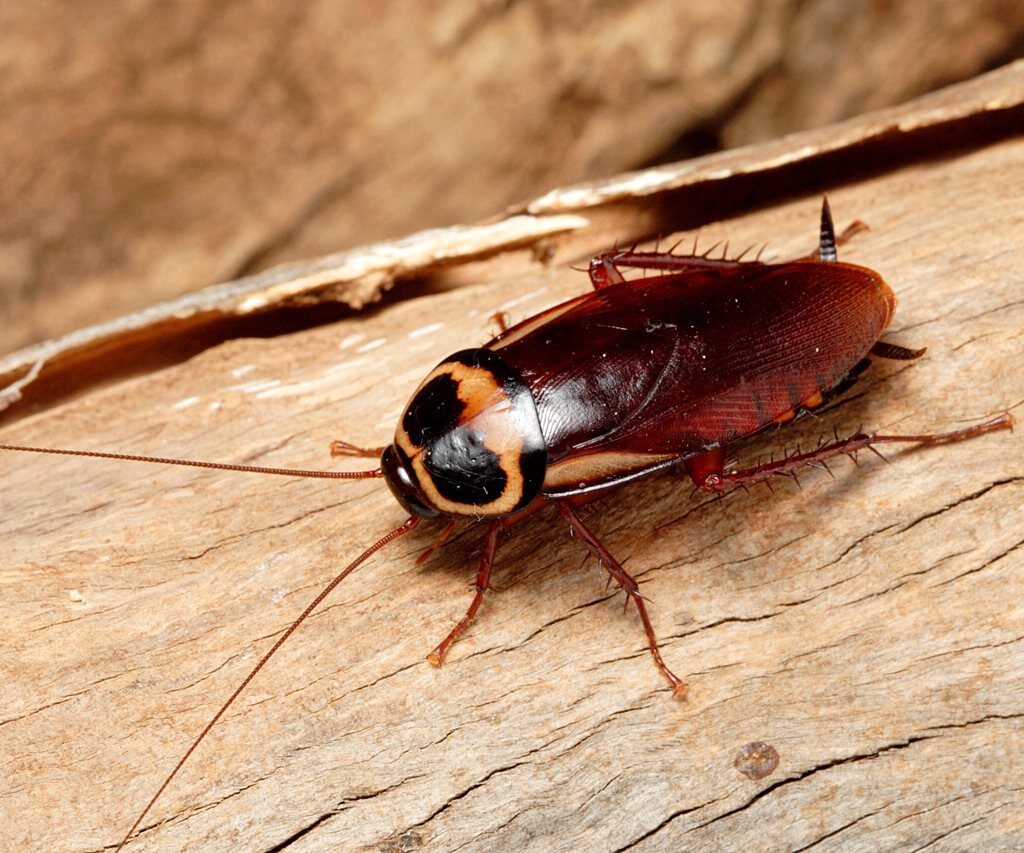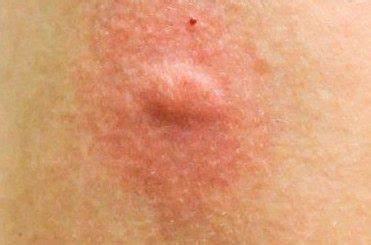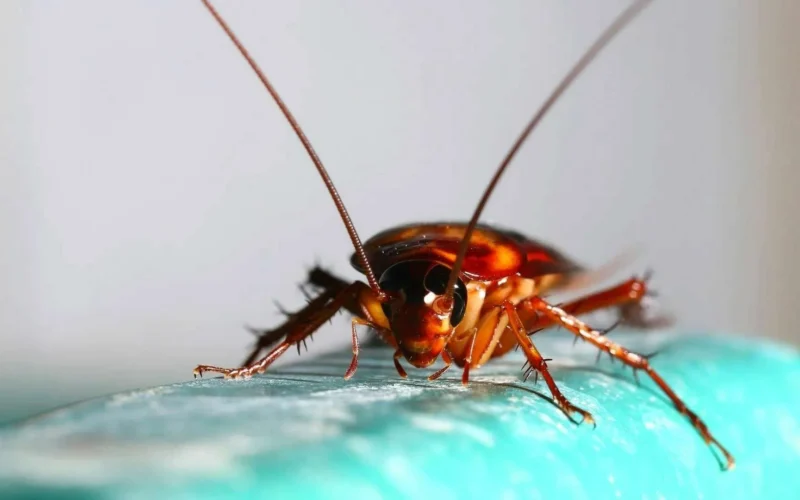Cockroaches are pests that eat almost anything, from grease to crumbs. But they rarely bite humans. Yet, if they face a big food shortage, they might bite us as a last resort. They look for food where it’s easy to find, like on our skin.
These bites are rare but can happen. They often target the face, mouth, hands, and fingernails where food bits might stick. If you think you’ve been bitten by a cockroach, it’s key to know what to do next and how to stop them from coming back.

Cockroaches and Their Propensity to Bite
Cockroaches are often seen as pests in homes and businesses. Many don’t know they can bite. These bites can look like those from bed bugs. It’s important to know what cockroach bites look like to deal with them.
When Do Roaches Bite People?
Cockroaches are most active at night. So, they’re likely to bite during sleep. They eat organic matter, not human flesh. But, they might bite humans if they’re hungry or feel threatened.
What Do Cockroach Bites Look Like?
Cockroach bites look like bright red, raised bumps, about 1-4 mm wide. They’re bigger than bed bug bites and usually just one bite. It’s hard to know who bit you unless you see the cockroach or find the infestation.
Cockroach bites aren’t dangerous but can cause irritation and allergic reactions. Keeping your place clean and dealing with cockroach infestations can reduce the risk of bites.
The Aftermath of a Roach Bite
If a cockroach bites you, it can be uncomfortable but usually not dangerous. You might feel skin irritation, swelling, and itchiness. It’s key not to scratch the bites to avoid infection. These bites are more of a bother than a health risk.
What Happens if a Roach Bites You?
Cockroaches don’t spread diseases through their bites like mosquitoes or ticks do. But, they can carry bacteria and germs around. So, a roach bite might be annoying, but it’s unlikely to cause serious health issues.
How Do You Treat a Roach Bite?
- Clean the affected area with warm, soapy water to prevent infection.
- Reduce swelling by applying an ice pack or using an over-the-counter hydrocortisone cream.
- Apply aloe vera gel to soothe the itchiness and promote healing.
- Avoid scratching the bite, as this can worsen the irritation and lead to a secondary infection.
- Seek medical attention if you experience a severe allergic reaction, such as anaphylaxis, which requires immediate treatment.
By following these simple steps, you can manage the effects of a cockroach bite well. Remember, roach bites are more of a bother than a serious health issue.
What do Cockroach bites look like
Cockroach bites can look like those from bed bugs. But, there are key signs to spot a cockroach bite. Cockroach bites are bright red, raised bumps, about 1-4 mm wide. They are bigger than bed bug bites and usually come one at a time, unlike bed bug bites which come in clusters.
It can be tough to figure out who bit you unless you see the bug or find the source. Cockroach bite pictures are rare because cockroaches don’t often bite people. They prefer eating food scraps or other organic stuff.
To spot a cockroach bite, look for a single, red, raised bump. These bites might make you feel a sharp pain, swelling, and itching. But, how you react and the cockroach type can change these symptoms.
The surest way to know you got bitten by a cockroach is to see it happen or have an expert check the area. Keeping your place clean and tidy can stop cockroaches from coming in and biting you.
Identifying Roach Bite Symptoms
Cockroach bites are not common, but knowing the symptoms is key. Symptoms can be mild skin irritation or severe allergic reactions in some.
A common sign of a cockroach bite is a red, raised welt on the skin. These bites can be itchy and swell. In some cases, the bite can also be painful, feeling like a pinch.
- Red, raised welts on the skin
- Itchiness and mild irritation
- Localized swelling around the bite
- Mild pain or a pinching sensation
Some people may have a severe allergic reaction to a cockroach bite. This can include symptoms such as:
- Increased swelling and itchiness
- Difficulty breathing or shortness of breath
- Low blood pressure
- Anaphylactic shock, which requires immediate medical attention.
If you think you’ve been bitten by a cockroach and have concerning symptoms, get medical help right away. Quick treatment can ease discomfort and prevent complications.

To avoid cockroach bite symptoms, keep your living space clean and clutter-free. Seal any cracks or crevices to keep pests out. Regular pest control visits can also help prevent infestations and reduce health risks.
Preventing Cockroach Infestations
Keeping your home free from cockroaches is key to a healthy living space. By acting early, you can stop these pests from making your home their own. This helps keep your living area safe and clean.
Maintain a Clean Living Environment
Cleaning your home regularly is a top way to keep cockroaches away. Make sure to clean kitchen counters, floors, and other surfaces well. This removes food bits that cockroaches love.
Always clean spills and crumbs right away. And keep food in airtight containers. This helps avoid attracting cockroaches.
Eliminate Clutter
Cockroaches like messy places because they hide and breed there. Keep your home tidy by organizing and storing things properly. Get rid of things you don’t need. This makes it harder for cockroaches to find a home.
Seal Cracks and Crevices
Cockroaches can fit into tiny spaces, so sealing openings is crucial. Use caulk or sealants to block their entry points. This includes around doors, windows, pipes, and electrical outlets. Sealing these spots keeps cockroaches out of your home.
Using these tips can help prevent cockroach infestations. A clean, tidy, and sealed home discourages cockroaches. This makes your home healthier and more comfortable.
Handling Roach Bites and Infestations
Cockroaches are tough and unwanted pests that can enter our homes. They rarely bite humans. If you think you’ve been bitten or have roaches at home, you need to act fast.
First, clean the bite with warm, soapy water to avoid infection. Then, reduce swelling and ease itchiness. If things get worse or you have severe reactions, get medical help right away.
To fight a cockroach infestation, think about calling a pro exterminator. They can figure out how bad it is and use the best methods, like baits, sprays, and traps. Keeping your home clean, getting rid of clutter, and sealing up cracks helps prevent roaches from coming in.
Even though roach bites are rare, they can be harmful if not treated. Acting quickly and getting rid of the pests keeps you and your family safe from discomfort and health issues.
Cockroaches like dark places and eat food scraps and organic stuff. So, even though roach bites are rare, it’s key to stay alert and stop infestations. With a pro exterminator and a clean home, you can keep your place roach-free.
Conclusion
Cockroach bites are not common but can be a problem. They show there might be more cockroaches in your home. Knowing what these bites look like and how to treat them is key for your health and comfort.
Keeping your home clean and organized helps prevent cockroaches. Sealing up cracks and crevices also helps keep them out. This way, you can lower the chance of getting bitten.
If you think you’ve been bitten or have cockroaches at home, act fast. You might need to call pest control experts to get rid of them for good. Cockroach bites are usually not serious but can be annoying. If ignored, they could lead to bigger health issues.
Being proactive about cockroach control keeps your home safe and comfy. Always keep your living space clean and don’t hesitate to get help if cockroaches show up. This way, you and your family can stay healthy and happy.
